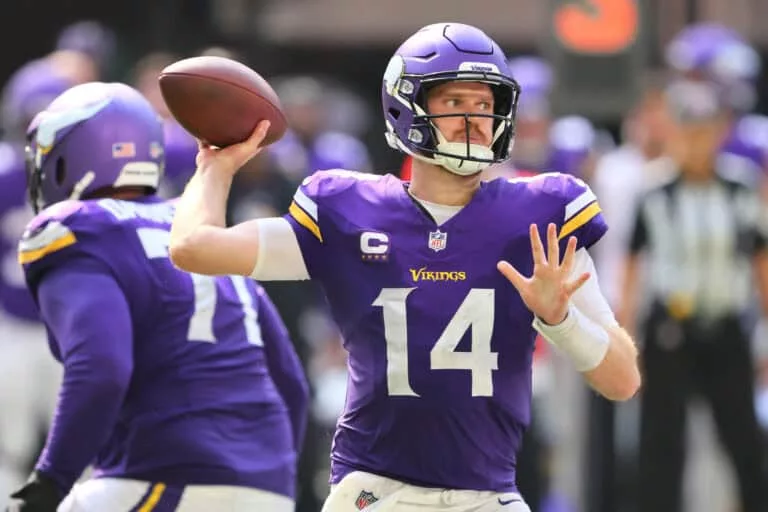
BREAKING NEWS:The Analyst Reveals Wild Stat About Vikings’ Performance…

In the ever-evolving landscape of the NFL, statistics play a crucial role in evaluating team performance and predicting future outcomes. Recently, a particular statistic regarding the Minnesota Vikings has caught the attention of analysts and fans alike. This stat not only highlights the team’s current struggles but also points to deeper issues that could affect their trajectory in the season.
The Vikings have a long history of ups and downs, but this season, a shocking statistic has emerged: they are among the worst in the league in turnover differential. Currently, the Vikings sit at a staggering -10 in turnover differential, a figure that is not only alarming but also indicative of systemic issues on both offense and defense.
To understand the implications of this stat, it’s essential to break it down. Turnover differential is calculated by subtracting the number of turnovers a team has committed from the number of turnovers they have forced. A negative differential means that a team is giving the ball away significantly more than they are taking it away, which puts immense pressure on the defense and can demoralize the offense.
For the Vikings, the issues start at the quarterback position. Kirk Cousins has been prone to costly interceptions, particularly in critical moments of games. While he has shown flashes of brilliance, his tendency to force throws into tight coverage has led to too many turnovers. This inconsistency not only hampers the offense but also places an added burden on a defense that has struggled to create turnovers of its own.
Defensively, the Vikings have been unable to capitalize on their opponents’ mistakes. Despite having playmakers like linebacker Eric Kendricks and safety Harrison Smith, the defense has managed to force only a handful of fumbles and interceptions throughout the season. This inability to generate turnovers exacerbates the team’s struggles, making it even harder for the offense to find rhythm and confidence.
Moreover, this turnover differential can have a cascading effect on the Vikings’ overall performance. When the offense is constantly giving the ball away, it leads to shorter fields for the opposing team, resulting in more scoring opportunities. Consequently, the defense finds itself on the field more often, leading to fatigue and decreased effectiveness over the course of the game.
Another layer to consider is the psychological impact of turnovers. Each turnover not only affects the score but also influences team morale. Players may start pressing to make plays, which can lead to even more mistakes. This cycle can be devastating, as it undermines the team’s confidence and cohesion.
As the Vikings move forward in the season, addressing this turnover issue will be paramount. The coaching staff must focus on not only reducing the number of turnovers committed but also instilling a mindset that prioritizes ball security. Furthermore, defensive schemes may need to be adjusted to create more opportunities for takeaways.
In conclusion, the -10 turnover differential statistic is a glaring red flag for the Minnesota Vikings. It reflects not just individual mistakes but a broader systemic issue that could derail their season if left unaddressed. As fans watch closely, the ability of the Vikings to improve in this area may very well determine their fate in the competitive landscape of the NFL.







